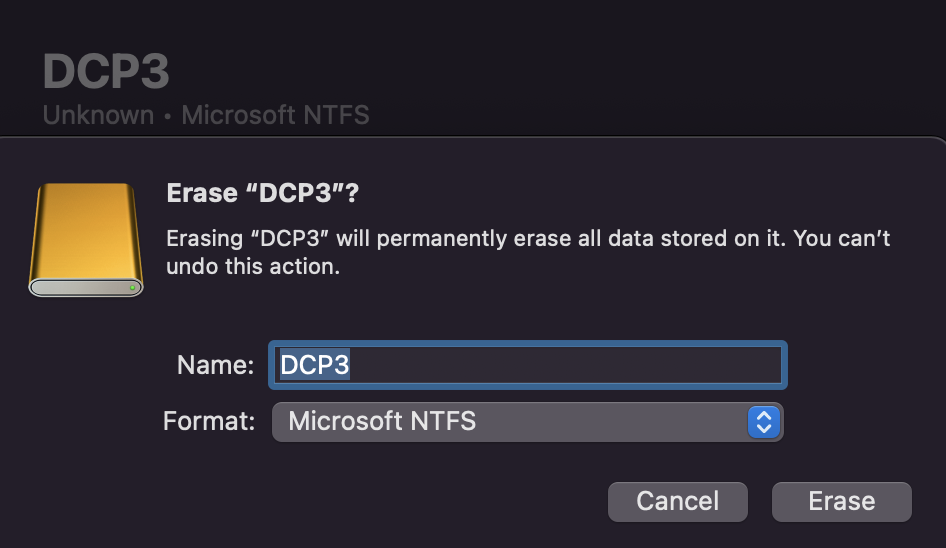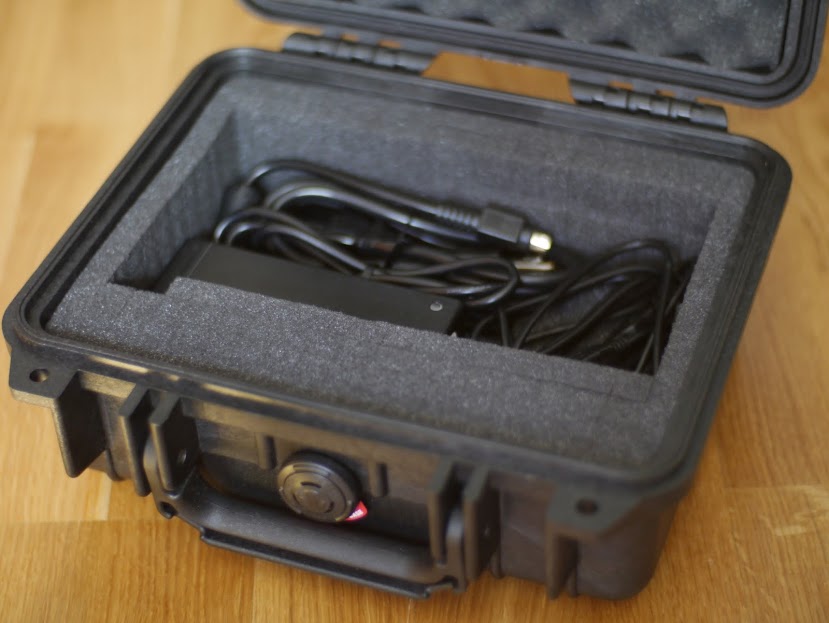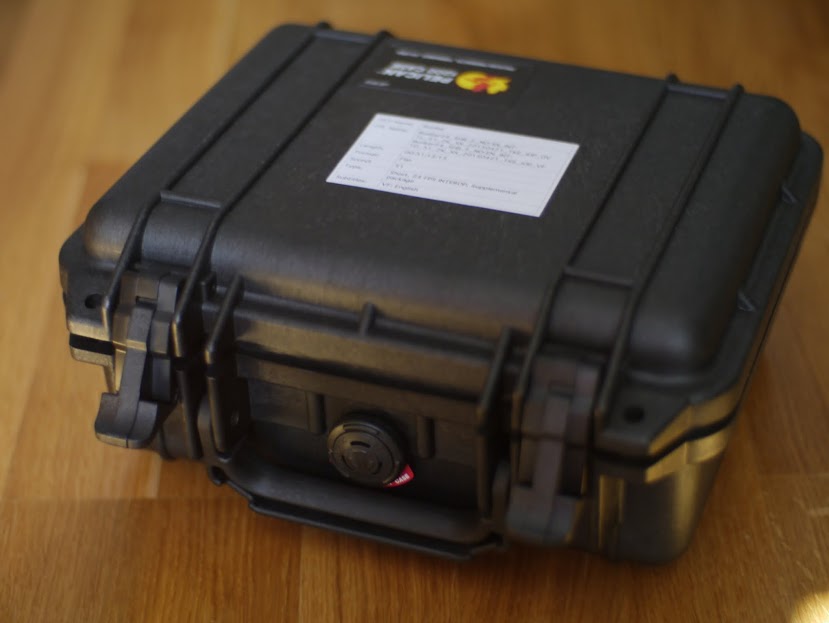Delivering Digital Cinema Packages (DCPs): Best Practices and File Structure
When delivering a Digital Cinema Package (DCP), the industry standard is to use a Linux ext3 formatted USB 2.0/3.0 compatible hard drive. Many professionals prefer the Cru Dataport DX-115 hard drive caddy with a USB 2.0/3.0 adapter due to its compatibility with various digital cinema equipment, including Dolby and Doremi systems.
For those interested in creating DCPs, I’ve written detailed tutorials on using the following software:
Understanding DCP File Structure:
A DCP is essentially a collection of files stored in a folder. The folder name is the same name as the DCP (content title, CPL name), and follows the ISDCF (Inter-Society Digital Cinema Forum) digital cinema naming convention, which provides crucial information about the content. Here’s an example of an ISDCF-compliant folder name:
NameOfMovie_FTR_F_EN-XX_INT-TL_51_2K_NULL_20220612_NUL_SMPTE_OV
This naming structure includes details such as:
- Movie title
- Content type (e.g., FTR for feature)
- Audio language and subtitle information
- Sound format (e.g., 51 for 5.1 surround sound)
- Resolution (e.g., 2K)
- Release date
- Compliance standard (e.g., SMPTE)
- Version information
Read more about creating a ISDCF name here
By following these best practices and understanding the file structure, you can ensure smooth delivery and playback of your DCP in various cinema environments.
Choosing the Right Hard Drive Format for DCP Delivery
When preparing hard drives for Digital Cinema Package (DCP) delivery, it’s crucial to consider the compatibility with various cinema servers, players, and Integrated Media Blocks (IMBs). Here are some important points to keep in mind:
- Linux Compatibility:
Many cinema DCP servers/players/IMBs use older Linux versions, which may not support exFAT-formatted hard drives natively. This limitation can cause issues during ingestion. - Partition Table Format:
- GUID Partition Table (GPT) hard drives work on upgraded systems but are not supported on older equipment.
- Master Boot Record (MBR) formatted hard drives are the safest choice, ensuring maximum compatibility across different systems.
- File System Options:
a. Linux ext3:- The most widely compatible option for cinema equipment.
- To format ext3 hard drives, you can use a Raspberry Pi or any other affordable computer running Linux.
- Can be an alternative to MBR Linux ext3.
- Particularly useful when working at a cinema and downloading a DCP for ingestion on a player/server, as it simplifies the process and you can check if it works.
- Formatting Tools:
- For Linux ext3 formatting, use a Linux-based system.
- DCP-o-matic includes a Linux-formatted hard drive copier, which can be a convenient option for many users.
By choosing the right hard drive format, you can avoid potential issues during DCP ingestion and playback in various cinema environments.
For more info on the hard drive format of DCP hard drives read this: ISDCF Disc File Format
Formatting a hard drive to ext 3 with GParted in Linux
In terminal. Install and run GParted.
sudo apt-get install gparted
sudo gparted
In Gparted
Make an MBR partition
(Max 2 TB)
Choose the correct hard drive like /dev/sdb
Click on “Device” – “Create a partition table”

Choose msdos and apply. All data on the disk will be erased.

Partition and format it to ext2
The hard drive is now empty, and the partition is unallocated. It will be first formatted to ext2, and then ext3 in the next step.
Right-click the unallocated partition and choose
Create new partition
Choose
Create as: Primary Partition
File system: ext2
Label:DISK234 or something similar

Click on the green checkmark “Apply All Operations”
Reformat with inode 128 and ext3
To follow the ISDCF requirements, you can reformat it as inode 128 and ext3
Note the name of the partition (like sdc1) and format it again in terminal with “-I 128”
sudo mkfs.ext3 -I 128 -L DCP123 /dev/sdc1
Copy the DCP in a file manager
Run sudo nautilus in Terminal to get root access
sudo apt install nautilus sudo nautilus
Then copy the DCP directory to the hard drive in the Nautilus file manager. Drag the folder to the hard drive.
Make the DCP directory read-only and executable
In Terminal, type chmod -R 755 and drag the folder from the hard drive to terminal window, and press enter
sudo chmod -R 755 '/media/knut/DCP123/DCP1'
Verifying DCPs
In EasyDCP player
You can check if the DCP is OK in the trial version of EasyDCP Player
You can mount ext 2/3 hard drives in Windows with Paragon extfs for windows or on macs with Paragon extfs for mac
Drag the DCP to Easydcp player
Choose Asset – Hash Checker
In Hash Checker
Choose start

NTFS hard drives
If you are downloading a DCP to a hard drive and want to ingest it in your cinema, NTFS hard drives from the store work on upgraded cinema players/servers.
You can use Paragon NTFS for mac to format and write to NTFS hard drives on Macs.

Read more about formatting GPT and MBR NTFS in my ebook.
DCP hard drives:
USB 2/3 HARD DRIVE
Digital Cinema Packages (DCPs) are commonly delivered on portable USB 2.0 or 3.0 hard drives, typically packaged in a protective Pelican case. A typical configuration includes:
- LaCie Rugged Hard Drive
- Pelican 1120 Protective Case
Important Power Considerations:
While USB hard drives are a standard delivery method, some cinema equipment may not provide sufficient power through their USB ports. To address this:
- Include a USB Y-cable with your hard drive
- This cable ensures compatibility with USB ports that don’t supply standard power
- Most cinemas with non-standard USB connections will have their own adapters, but it’s better to be prepared
The complete delivery package should look like this:

Cru DCP KIT 3
Pre-built CRU DCP KIT 3 with USB 2/3 adapter and hard drive pre-formatted to ext3:
https://www.cru-inc.com/products/digital-cinema/digital-cinema-dcp-kit-3/
Custom-made Pelican case/CRU DX115 KIT
Use these parts:
- The Cru Dataport DX-115 hard drive carrier/caddy
- The Cru Dataport Move Dock DX115 USB 2/3 with a USB cable
- Western Digital Caviar Black 2 TB 3.5 Inch Hard Drive
- Pelican case 1200
Together these could look like this:



An external (USB connection) hard drive is great for portability, but its data transfer rate will be less than 10MB/sec. So if your content is a trailer or a short movie it won’t take that long to transfer.
However, a full 120GB DCP file will take longer than 3 hrs to transfer + the verification time on top of that! If the theatre has the time to transfer it – great. But don’t expect to just drop it off the night before a screening.
A friendly reminder from your independent cinema’s projectionist.
Math:
10MB/s x 60/s = 600MB/min. 120,000 MB / 600MB/min = 3 hrs, 20 min!
Verification is typically 1/2 the time it takes to transfer so let’s say an additional 90 min.
You’re now up to almost 5 hrs (and I’ve been generous in the transfer rate)!
It is true that a USB 2 pendrive can have really slow transfer speeds like 5 MB/S or 10 MB/S, and if a doremi server is busy playing a movie the transfer speed will be 10 MB/S for all sources. But USB2 is faster than 10 MB/S, it can reach 40 MB/S.
A USB 2 harddrive usually have a transfer speed of 20-40 MB/S on a Doremi server and a 80 GB feature film will transfer in an hour with verification.
A CRU Sata harddrive docked in the server or a gigabit ethernet transfer will have a transfer speed of 80-100 MB/S of a 80 GB feature film will take 20 minutes with verification.
If having problems you should check that the harddrive is MBR,
you could also use a Linux live USB key and make the directory with the DCP read only and executable like I described in the post.
True, I have found that Dolby servers will only play nice with drives formatted “Master Boot Record”.
I use format MBR for all DCP delivery using Ubuntu.
Hello. We have a MacPro running the latest version of OSX and have been using the trial version of easyDCP to create some tests prior to purchasing the full license. The problem we are now having seems to be the compatibility between the Mac and the Linux formated external drives that we are trying to load the DCP files onto. Any suggestions? We’ve tried two different versions of Linux and they keep crashing. One suggestion was that we network a PC to the Mac and simply use that to transfer onto the external drives. Again, any suggestions would be greatly appreciated. I have to think that other people have solved this problem.
Thanks
I run Easypeasy Linux on USB pendrive made with USB linux creator. You should be able to copy from windows and mac harddrives in linux to the linux harddrive.
I run a dolby dss200. I need to make room for new content but do not have a Linux computer nor do I know anything about its operating system. Anyway to use a windows or mac system to transfer content ( trailers, unencrypted ) to an external HD?
Thank you!
I am only familiar with the Doremi server, with the new sofware on those servers you can plug in a linux formatted harddrive and tranfer DCPs to that. But it seems you can FTP to your DSS-200 and look in a folder called generatedPackages where you can find the DCPs on the server (according to this dcinema forum thread)
I received an answer to my question and wanted to share it in case others have the same need.
http://www.partition-tool.com/download.htm
http://sourceforge.net/projects/ext2fsd/files/
The top link is the only freeware partition format tool that works for EXT2 and 3. You want to format your drive for EXT3. Once you download the tool, it is pretty easy to figure out. Just remember that you have to hit the apply button whenever you make a change. (that screwed me up for a while)
The second link is for an ext2 volume manager…that’s so you can give a drive letter to the drive and drag and drop dcp files to and from it on your computer.
Don’t be discouraged if you have to format it a couple of times … it usually works the first time, but I’ve had to re-format a drive a couple of times before the dolby would recognize it.
I used final cat pro for my final cut. then used Wraptor (Only for mac) to export film via compressor 4. Upoladed (Via USB 3) to sony 2K/$K projector and got great result. Used just regular portable Hard Drive.
But i would like to have one that can be uploaded to doremi server. So with all those parts named do they come with power supplies?
Thanks
Pingback: Need to make a DCP delivery for your film? | Georgia Hilton
The docking station has a power supply. I’ve updated the post.
Pingback: Making a Digital Cinema Package « Neil Oseman
Hi,
Do you think the pelican 1200 case will fit the CRU + HD + adapter + power plug and cables?
Os just the pelican 1400?
thanks,
You can fit everything in the pelican 1200, but you will get less protection.
Hi Knut! Your blog is still such a great resource. Thanks also for linking to the great AE plug-in j2k which I use all the time.
I’m not knowledgable in Unix at all, but I recently installed Ubuntu on an old Dell to be able to format devices in EXT3 with an i-node of 128 which is something Tuxera or the likes don’t seem to do on a Mac. Some festivals demand ‘DCI-compliant’ EXT3 i-node 128 carriers. I really wonder which D-Cinema server won’t ingest from an NTFS formatted drive..
An avid Unix user told me the following command will format a device in EXT3 with an i-node of 128 all at once:
sudo mke2fs -t ext3 -I 128 -L DCP 0/dev/sdb1
where sdb1 is the port in which you’ve plugged your external storage device. To check where it is, type the command ‘mount’ first.
“-L DCP” creates a volume label named ‘DCP’, you can pick your own name of course
If your drive needs to be unmounted first,
type sudo umount /dev/sdb1
Hi Knut! Great info! I put some info on preparing a DCP on a dedicated website i made. It has some info on a way to format to ext3 and on sound in DCP as well. Look at 24beelden.nl
Hi Knut! Thanks so much for your post, it’s very helpful. I’m a total newbie and I’ll be formatting a hard drive for the first time to put a DCP on it and I’m wondering if using Neil Oseman’s method is safe:
“Once Ubuntu was running, I right-clicked the LaCie Rugged in the list of drives in the lower left of the desktop and chose format from the contextual menu. To get more than the default options, I clicked Disk Utility in the dialogue box that came up. I could now select EXT3 as the file system (leaving the other settings at their default values). When I clicked format, Ubuntu didn’t seem to be doing anything, but after a few minutes the Disk Utility showed that the volume had been created.”
Or do I need to go through your method to be on the safer side?
Hi. MBR, inode 128 and chmod 755 is recommended.
Hi,
Has anyone done a ext3 MBR, inode 128 and chmod 755 using on a Win10 system
EaseUS Partition Master and then paragon ExtFS for Windows to copy your DCP to the drive.
-Evan
Well over my head here…
But I have created a DCP file for my local theater…
They have a Doremi? server and Christie 2K projectors.
I put the file on a normal cheap flash drive and nothing showed up at the theater… What should I do differently to transport my DCP to the theater? We have 15 student films scheduled to play in 3 days and I need help.
I downloaded the trial easyDCP to be sure my DCP file would play and it did.
Thanks for any help!
Sounds like you have a GPT or Exfat flash drive. I updated the post with a description on how you can check if you have a 1 partition Master Boot Record NTFS hard drive/ USB pen in Windows. The people working at the cinema should be able to copy the content to a working flash drive.
Hi, What are the rules on the naming of the first folder of the DCP? Also can that folder be re-named?
Question, why does a USB3 stick like Corsair Flash Voyager Slider 128gig take SO much longer to format then a 1TB HHD USB3 drive.
Also I’ve heard it is not good to use hard drivers 2TB or larger for DCP’s. But since 500gig drives are almost impossible to get and 1TB drives are going that way also. What will be the plan?
I’m new to all of this. I had a DCP made and put onto a CRU drive by a company for my first film and now I got a dock to try to do it myself for my second. Is it possible to have two DCPs on the same CRU drive? They should fit. They are both just over an hour long and shot in 1080p.
Hi. Yes, If you have two different DCPs in separate folders on the hard drive it should work.